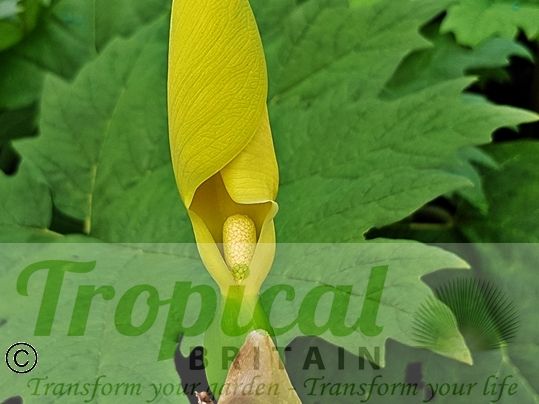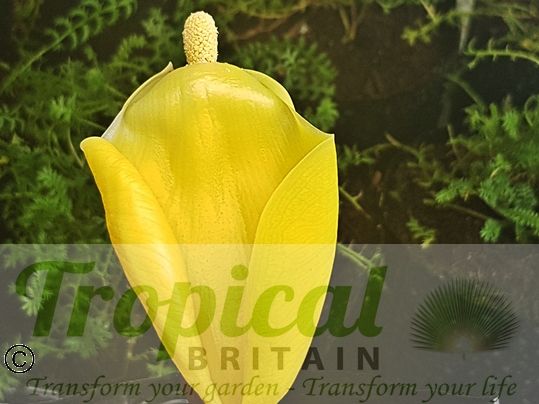Remusatia vivipara is an interesting and unusual aroid with a wide geographical distribution from Africa across to the Far East. Like the other species of Remusatia it is often referred to as the Hitch Hiker plant because of the small fuzzy bulbils on its stolons which get stuck to the fur of animals which help to spread its gene pool over a wide area. It has an attractive inflorescence with a yellow spathe and short pale-yellow spadix. The spathe stands erect for the first few days then reflexes over leaving the spadix standing proud. The exotic Colocasia-like foliage emerges after the inflorescence has died down. The stolons emerge in late summer to early autumn, growing vertically and are more stout than other Remusatia species. It is the largest of the Remusatias and the glossy leaves, pinkish on the undersides are extremey exotic. Cold tolerant but not fully hardy in the UK it makes an ideal exotic epiphyte in the summer months then the bulb can be brought in and kept dry over winter. Or it an be grown in a container and brought in under glass during its winter dormancy.
Additional Information
| Order | Alismatales |
|---|---|
| Family | Araceae |
| Sub-Family | Aroideae |
| Synonyms | Arum viviparum, Caladium viviparum, Caladium viviparum, Colocasia vivipara, Remusatia bulbifera, Remusatia formosana |
| Geographical Origin | Africa, Middle East, Himalayas, Far East, Australia |
| Cultivation | Shady. A sheltered position. Moist acidic humus-rich soil on a free-draining rocky base. Dormant in winter. Ideal in a container or as a summer epiphyte |
| Eventual Height | 50-60cm |
| Eventual Spread | 40-60cm |
| Hardiness | Hardy only in warmer parts of the UK in a shady woodland setting if a free-draining substrate and thick mulch is provided. Elsewhere keep dry or lift tubers over winter. |

Free DELIVERY
ON ALL ORDERS OVER £99THIS OFFER IS VALID ON ALL OUR STORE ITEMS.










